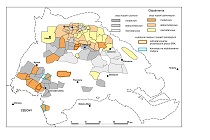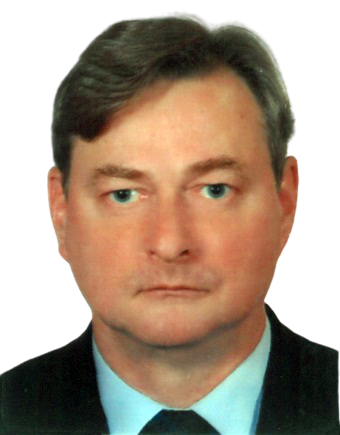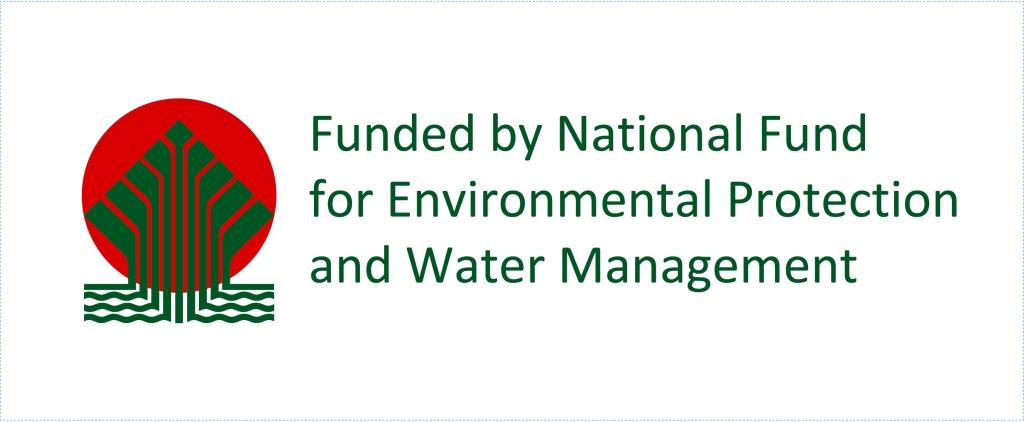 Currently, methane extraction from abandoned hard coal deposits is approximately 5 million cubic meters, while the potential for its extraction should be estimated at several billion cubic meters. Capturing methane from closed mines can - and should - be an important addition to the national energy mix.
Currently, methane extraction from abandoned hard coal deposits is approximately 5 million cubic meters, while the potential for its extraction should be estimated at several billion cubic meters. Capturing methane from closed mines can - and should - be an important addition to the national energy mix.
Anna Bagińska, Editor in Chief of the Promotion and Communication Office, talks about the task of the Polish Geological Survey concerning the evaluation of resource potential and possibilities of coalbed methane exploitation in abandoned hard coal deposits with its director, Janusz Jureczka, Ph.D. - the director of the Upper Silesian Branch in Sosnowiec.
Anna Bagińska (AB): In March 2022. PGI-NRI is completing the task entitled "Assessment of the resource potential and the possibility of exploiting coalbed methane in abandoned hard coal deposits". Dr. Jureczka, please tell me, the resources of which coal basins are the subject of the analysis?
Janusz Jureczka (JJ): In implementing this task, we undertook the analysis of those hard coal deposits with abandoned exploitation, in which to the depth of their documentation there are coalbeds with high methane concentration and especially - those deposits, from which methane was released in significant amounts during coal extraction. Thus, these are abandoned coal deposits of two basins: Upper Silesian Coal Basin (from pol. Górnośląskiego Zagłębia Węglowego – GZW) and Lower Silesian Coal Basin (from pol. Dolnośląskiego Zagłębia Węglowego – DZW).
It should be noted that after a preliminary analysis of coal deposits in the DZW, it was concluded that the deposits in this basin do not have the potential for coalbed methane extraction. This is due to two reasons.
First, generally both methane and carbon dioxide are present in closed DZW mines, often in similar amounts, and less often carbon dioxide predominates.
Secondly, it is important to note that a very long period of time has passed since the mines were decommissioned - 20-25 years, which unfortunately does not provide much prospect for methane extraction from goafs, and it is the possibilities of extracting methane from goafs, or in other words from the rock mass covered by exploitation, that were the main subject of the analysis. Thus, the more detailed analysis covered only abandoned coal deposits in the GZW, in which coal extraction was terminated in the final months of 2020.
AB: What criteria were taken into account when determining deposits that might be prospective for methane extraction?
JJ: The initial criterion for qualifying a given deposit for analysis was undoubtedly a parameter that stems from mining practice, i.e. the category of methane hazard in a given mine or its part, and using a more common term - whether it was a mine that contained methane.
The most important criterion indicating the possibility of acquiring methane from an abandoned deposit is the total amount of methane emission (methane intensity) recorded during coal exploitation. As I have already mentioned, the time that has passed since coal exploitation was ceased and the method of mine decommissioning are also of considerable importance. Other criteria are of secondary importance and include above all: methane carrying capacity of exploited coal seams, methane resources as an accompanying mineral, depth of methane seams and depth of coal exploitation, as well as geological conditions, especially tectonic and hydrogeological conditions.
It should be added - as I mentioned before - that we are talking about the extracting methane from a part of rock mass affected by coal exploitation, generally speaking - from goafs and mine workings. The remaining part of rock mass of a given deposit, most often below the maximum depth of exploitation, is characterized by parameters typical for the so-called virgin deposit, among which the most important is coalbed methane-bearing capacity.
AB: How many deposits have been qualified for detailed analysis according to the adopted criteria? What is the nature of the work connected with the implementation of this stage and what is its objective?
JJ: Nine abandoned coal deposits were selected for detailed analysis. The implementation of this stage, similarly to the whole project, covers only the analysis of existing data included in geological documentation and other studies concerning these deposits. The main task of this stage is to estimate the remaining recoverable methane resources in accordance with the proposed methodology, as well as to determine the technical feasibility of their access and to forecast the exploitation time and the amount of gas to be extracted.
AB: The methodology that should be used for estimating methane resources that could be subject to economically justified extraction was developed by PGI-NRI. It is a very innovative approach to estimating methane resources from closed mines. What does it consist in?
JJ: The proposed innovative approach to estimating methane resources in sealed mine deposits is a response to methodological shortcomings of the methodology used to date for documenting these deposits, which resulted in reduced accuracy and reliability of the estimated resources.
The shortcomings of the current methodology are the result of an inappropriate legislative approach to documenting coalbed methane, especially the inclusion of methane from closed mines in methane documented as a main mineral, i.e. analogous to virgin deposits where no coal extraction has ever taken place.
A new methodology for estimating methane resources was developed based on the results of detailed analyses of a specific case of a recently closed, highly methane-affected coal mine. The main assumptions of this methodology are - determination of the zone of the effective drainage range for methane and estimation of emissions during coal extraction and prediction of methane emission intensity as a function of time from the termination of coal extraction.
The novel approach is that the unreliable determination of recoverable resources using the volumetric method has been replaced by the determination of total recoverable resources based on methane emission data, including the prediction of residual resources to be extracted through openings from caves, as a basis for calculating industrial resources.
It should also be added that the implementation of the newly developed methodology will depend on the introduction of changes to the regulations on documenting coalbed methane resources.
AB: In active mines, the extraction of methane takes place through a methane drainage system, carried out during coal mining. What technology is used to extract methane from closed mines?
JJ: In the initial phase after coal extraction is completed, before the mine is completely decommissioned, methane is usually captured using the existing methane drainage system.
At a later stage, generally after decommissioning is complete, methane is extracted through boreholes drilled from the surface into the goaf, which contain hydraulically isolated gas reservoirs. The extraction of gas from the goaf, either by means of a methane drainage system or by drilling into the goaf, is carried out under negative pressure, unlike the extraction of methane from coal seams in virgin areas.
AB: Nowadays, the mine decommissioning process usually takes several years and only after it is completed can an entrepreneur who intends to mine for methane apply for a license. What happens to the methane that is released into the goaf during that time?
JJ: After coal mining is terminated, methane is released through desorption and diffusion from previously unmined coal seams contained within the disturbed zone (annealed zone). Excess methane must be discharged for safety and environmental reasons. Therefore, methane is exploited under appropriate regulations, which allow the Mine Restructuring Company (from pol. Spółka Restrukturyzacji Kopalń, abbr. SRK) to manage it until the mine liquidation is completed, without applying for a mining license.
After mine decommissioning is complete, the methane in the abandoned coal deposit is treated as the main mineral, and applying for a concession to extract it is subject to regulations analogous to those for hydrocarbon deposits, which is not a good formal solution.
AB: Does undertaking methane extraction from goafs a long time after the cessation of coal mining, affect the efficiency of the use of methane deposit resources?
JJ: Methane is emitted into the goaf continuously after coal extraction is finished, however its intensity decreases very quickly. According to estimates of the Central Mining Institute, during the first year, the amount of methane emitted from a single longwall goes down to less than 20% of the average methane output from that longwall during its exploitation period. After a few years, the amount of emitted methane constitutes only a few percent of the initial emission and after a dozen or so years (it is estimated that it is about 15 years), the emission practically disappears. At the same time, available resources are additionally depleted due to a rising water table, if the mine is sunk.
This means that the amount of available resources is inversely proportional to the amount of time that has elapsed since the end of coal mining, so postponing the start of methane extraction has a very negative impact on the efficiency of the deposit.
AB: So far, since 1989, several dozen mines have been closed, several of them methane mines. Was the methane released into the goaf in those abandoned deposits captured?
JJ: Most of the mines in the GZW form compact complexes, where mines are adjacent to each other. Therefore in the methane mines being closed, with the exception of two mines ("Morcinek" and "Krupiński"), the methane released into the goaf can be taken over by the methane drainage system of the neighboring active mines. Until now, methane from closed mines was extracted through goaf holes on the basis of concessions from two deposits only: Kaczyce (Morcinek mine) and Żory 1 (Żory mine). In both cases, industrial exploitation of methane started after a relatively long period of time after coal exploitation ended, 8 and 17 years respectively.
It should be added here that the deposit within the closed Żory mine borders the still active Borynia coal mine. Moreover, SRK exploits methane during the decommissioning of three mines: "Krupiński", "Jas-Mos" and "Śląsk".
AB: When implementing the project, could we rely on the experience of other countries in this area? Are there any countries where there is methane exploitation from abandoned deposits?
JJ: Yes, primarily Germany, which boasts the world's largest use of methane resources from closed mines. Also: US, Australia, UK, and more recently China.
AB: Mr. Director, who can be the beneficiaries of the project results after the project is completed?
JJ: In Poland, extraction of methane from decommissioned hard coal mines has been marginal until now. It is conducted in only two deposits and the annual production volume amounts to approximately 5 million m3 (data for 2020), which constitutes 1 ‰ of domestic gas production and about 1.7% of methane captured during coal exploitation.
The possibilities to extract this gas from the deposits of closed mines should be estimated at least at several billion cubic meters, and additional resource potential is constituted by methane occurring in these deposits, outside the zone covered by coal exploitation, from the so-called "virgin" coal seams. Therefore, capturing methane from closed mines can - and should - be an important supplement to the national energy mix. This is very important in the context of recognizing natural gas as a transition fuel during the energy transition.
The current high price of gas makes its development from indigenous deposits crucial to the national economy. For these reasons, reliable estimates of methane resources from abandoned coal deposits resulting from our proposed methodology are extremely important for planning its future exploitation.
The implementation of recommendations postulated in our project concerning legislative changes facilitating and accelerating the use of methane from goafs, will result in domestic entrepreneurs becoming direct beneficiaries, for whom the economic attractiveness of extraction and use of this valuable raw material will significantly increase, on the basis of concessions issued by the Minister of Climate and Environment.
The obvious safety and environmental benefits of effectively capturing methane as a potential source of methane - a greenhouse gas - into the atmosphere should also not be overlooked.
AB: Thank you for the interview!
 JANUSZ JURECZKA. Ph.D.
JANUSZ JURECZKA. Ph.D.
Director of the Upper-Silesian Branch, PGI-NRI Geologist, graduate from the Faculty of Earth Sciences at the University of Silesia in Katowice. Since 1983 he has been working at the Polish Geological Institute, in its Sosnowiec Branch.
He is a specialist in the field of geology of hard coal deposits and coalbed methane, including methane extraction through directional drilling. Member of the International Group of Experts on Methane and the presidium of the International Centre of Excellence on Methane from Mines in Poland, operating under the aegis of the United Nations Economic Commission for Europe. Author or co-author of 150 specialist publications and about 100 archival studies. Holder of a category II geological licence.

Translated by: Tomasz Trzpil
















 PGI-NRI offer
PGI-NRI offer Mineral resources of Poland
Mineral resources of Poland  Oil and Gas in Poland
Oil and Gas in Poland 




 Subscribe to RSS Feed
Subscribe to RSS Feed